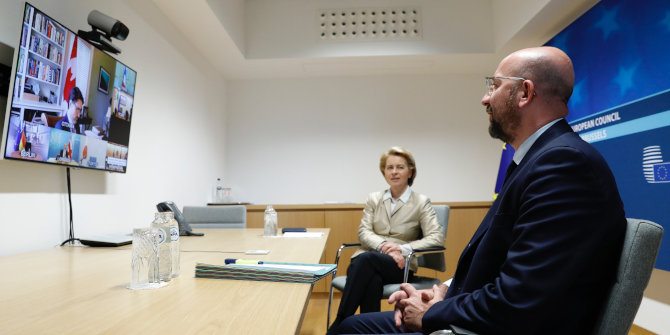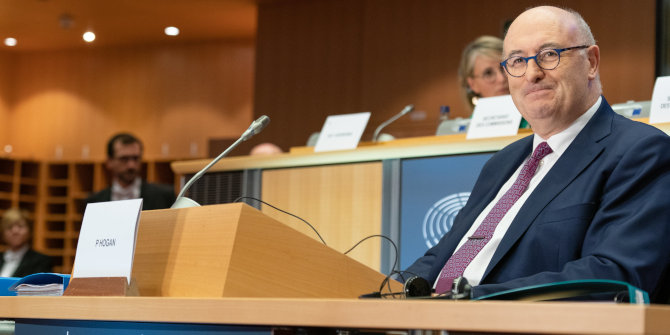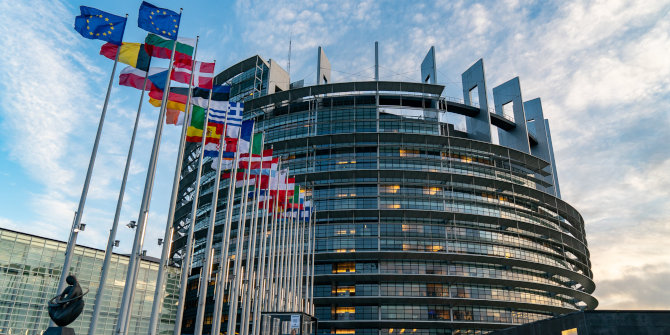 The UK government has said it wants the country to leave the jurisdiction of the European Court of Justice after Brexit. Carl Baudenbacher, the President of the EFTA Court, argues that Britain could use his court to resolve disputes. He explains the mutually enlightening relationship between the two courts and rejects the claim that the EFTA Court is easily outgunned by the ECJ.
The UK government has said it wants the country to leave the jurisdiction of the European Court of Justice after Brexit. Carl Baudenbacher, the President of the EFTA Court, argues that Britain could use his court to resolve disputes. He explains the mutually enlightening relationship between the two courts and rejects the claim that the EFTA Court is easily outgunned by the ECJ.
The EFTA Court is an independent European court, with jurisdiction in cases originating from or concerning the current three EFTA states which are parties to the European Economic Area (EEA) – Iceland, Liechtenstein and Norway. The EEA Agreement is based on an EU pillar and an EFTA pillar. As a matter of principle, individuals and economic operators have the same enforceable rights in both pillars. But the EFTA Court has not recognised the principles of direct effect and primacy, and there is no written obligation on the courts of last resort to make a reference.
The case law in both pillars must develop in a homogeneous way. After almost 24 years, the EFTA Court’s relationship with the Court of Justice of the European Union may be described as follows:
- As a rule – but not always – the EFTA Court follows relevant ECJ case law. It has occasionally adjusted its case law to later ECJ jurisprudence (for example in the area of state alcohol monopolies).
- In most cases, the EFTA Court has to tackle novel legal questions. The ECJ follows EFTA Court case law, both explicitly and implicitly. The EFTA Court is in fact the only court of general jurisdiction whose jurisprudence is regularly taken into account by the ECJ when interpreting EU law. There have been cases in which the ECJ initially did not follow the EFTA Court, but in later cases put itself in line (taxation of outbound dividends, state gambling monopolies, the legal nature of a website).
- The EFTA Court may have to deal with cases where the ECJ’s case law is unclear, or even inconsistent.
When it comes to the law on the books, the EFTA Court is supposed to follow relevant ECJ case law, whereas the ECJ is free to follow EFTA Court case law. As regards the law in action, this system has, however, largely been replaced by judicial dialogue. In this discourse, Advocates General and the General Court also play an important role. ECJ President Vassilios Skouris wrote in 2014 that the relationship between the two EEA courts is a symbiotic one marked by mutual respect and dialogue which allows the flow of information in both directions. Homogeneity has therefore become a process-oriented concept. I am a bit surprised that the British government’s “Enforcement and dispute resolution” paper is limited to the law on the books.
I have often been asked what happens in the event of a conflict between the two EEA courts. The answer is that we have to again distinguish between the written law and practice. And again, the UK government’s dispute resolution paper is confined to the written law. Article 105(2) EEA states that the EEA Joint Committee must keep the development of the case law of the ECJ and the EFTA Court under constant review and shall eventually “act so as to preserve the homogeneous interpretation of the Agreement.” The Joint Committee is a diplomatic body consisting of representatives of the EU and of the EFTA states Iceland, Liechtenstein and Norway; it can only decide by consensus.
If it does not succeed, the procedures laid down in Article 111 EEA may be applied. Under the latter provision, the Contracting Parties to the dispute may agree to request the ECJ to give a ruling on the interpretation of the relevant (EEA) rules. If this is not done and the conflict persists, a Contracting Party may either take a safeguard measure or declare the provisional suspension of a part of the Agreement.
These provisions have never been applied in the almost 24 years of the EFTA Court’s existence. They are, in fact, hardly operational. It is unthinkable that a political body such as the EEA Joint Committee would interfere with the judgment of a court of law. Under Protocol 48 to the EEA, decisions of the Joint Committee may not affect the case law of the ECJ. The same must apply to decisions of the EFTA Court. That follows from the principle of judicial independence. It is also hard to imagine that the EFTA side would agree to submit a judicial conflict to the ECJ, the court of the other side. And it is unlikely that the EU will take safeguarding measures or declare the provisional suspension of parts of the EEA Agreement because of a judicial conflict; such a step could put the existence of the agreement at risk.
In the first Icesave case in 2013, the EFTA Court dismissed the action of the EFTA Surveillance Authority (ESA) against Iceland. ESA had sought a declaration that by not compensating depositors of the Icelandic Landsbanki in the UK and the Netherlands up to the amount of 20,000 euros prescribed by the relevant directive, Iceland had violated its obligations under the EEA Agreement. The Commission had intervened on ESA’s side and the British and the Dutch Governments had submitted observations in favour of ESA. Although the Commission was not amused, no action was taken. The EU is a community of law which will not easily attack a judgment of the EFTA Court on a political basis. Modern literature thus considers that the two EEA courts have to sort out any problems by way of dialogue. One could say that in this, they are doomed to success.
And as ECJ President Koen Lenaerts has recently confirmed, the system works well. The EFTA Court is much smaller than the ECJ and its case load is limited. But it has its own voice, and on essential questions of European single market law it has gone its own way. Examples can be found in the law of the fundamental freedoms, competition law, collective labour law, internet law or consumer protection law – to name just a few areas.
As a court of three, the EFTA Court cannot decree. It must convince its audiences. The court aims at making a virtue of this necessity by giving comprehensive reasons. Observers have remarked that it has developed its own style. It is clear that with a British judge, the EFTA Court could further strengthen its profile without giving up the overall goal of realising a homogeneous European Economic Area. Mats Persson’s contention that under Articles 105 and 111 EEA, the EFTA Court “was easily ‘outgunned’ by the ECJ,” would then be even less appropriate than it is now.
Please read our comments policy before commenting.
Note: This post was originally published by our sister site, the LSE Brexit blog. The article gives the views of the author, not the position of EUROPP – European Politics and Policy or the London School of Economics. Featured image credit: Markus Daams via a CC BY 2.0 licence
_________________________________

Carl Baudenbacher
Professor Carl Baudenbacher is President of the EFTA Court and Director of the Competence Center for European and International Law at the University of St Gallen HSG.





